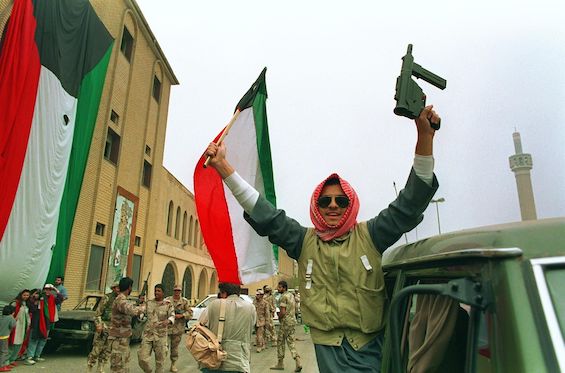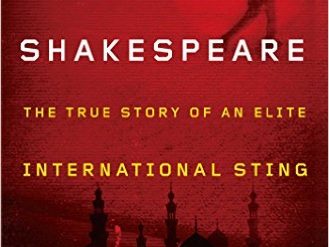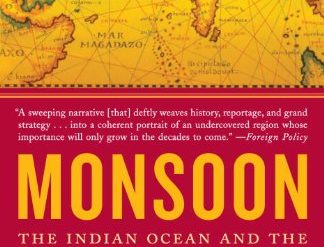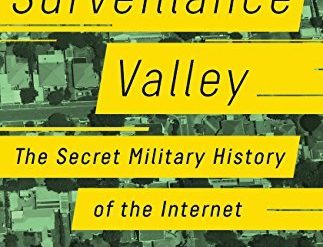
Poland today appears to be evolving into fascism. But it’s not the mirror image of what it was for more than four decades under the iron thumb of the Soviet Union. The country is no longer a police state. Democracy of a sort is in place, and capitalism reigns. The country’s membership in the European Union and NATO restrain the excesses of its right-wing government. At least on paper, a long-standing alliance between Polish spies and the CIA continues to serve as a moderating influence. In the final analysis, the attitudes of the country’s leadership resemble more closely those of the reactionary and anti-Semitic noblemen and militarists who ran Poland during its two-decade interlude of independence between the two World Wars. But since 2015 the country has been languishing under what is politely called “illiberal” government, which is steadily eroding hard-won democratic liberties.
Polish spies and the CIA: a strategically important alliance
However, in the late 1980s and early 90s, as the Berlin Wall came down, the Soviet state collapsed, and the Communist regime in Warsaw began to crumble, Poland was a hopeful place. And it was during that time that the unlikely alliance of the American, British, and Polish intelligence agencies took root. Journalist John Pomfret tells that story in his eye-opening book, From Warsaw With Love. Focusing on collaboration between the CIA and the various iterations of Poland’s spy agency, he follows the course of the strategically important alliance from 1989 to the present.
From Warsaw With Love: Polish Spies, the CIA, and the Forging of an Unlikely Alliance by John Pomfret (2021) 276 pages ★★★★☆

The CIA helped Poland rebuild its intelligence agency after the fall of Communism
Pomfret draws a sharp distinction between the US strategy toward Poland in 1990 and its bungled “de-Baathification” of Iraq in the 2000s. The Poles chose not to purge everyone who had worked in the Soviet-allied regime, as the Americans later did with Saddam Hussein’s officials in Iraq. Instead, they government followed the lead of the CIA and forged a working relationship between the activists of Solidarity and veteran spies whose loyalty to the USSR had been simply a matter of convenience. Together they built a new foreign intelligence agency that was effective from the start.
Pomfret explains: In Poland “[t]here were ‘shock therapy‘ measures being taken to salvage Poland’s economy. There were the negotiations on the withdrawal of Soviet troops. A whole new generation of entrepreneurs was diving into the sea of private business. The Communists had lost control of the old world but the new world had yet to take hold.” Instead of turning Polish society inside out in the obsessive belief that everyone who had served the Communist regime was an agent of the Soviet Union, the country’s new leaders sensibly weeded out those who were from those who weren’t. The result proved to be of immense value in securing Poland’s independence and in serving US strategic objectives. And all that painstaking work has been negated since 2015, as anti-Communist zealots have seized control of the levers of power.
Flamboyant spies on operations “stranger than fiction”
In From Warsaw With Love, Pomfret tells the tale of a flamboyant Polish spy in the 1970s and 80s who plundered top-secret documents from the aerospace industry, including early US stealth technology. “As an agent from the Soviet-led Warsaw Pact, [Marian] Zacharski robbed the United States of its most closely held military secrets. . . A 1982 CIA report . . . estimated that Warsaw Pact forces saved hundreds of millions of dollars in research and development and ‘put in jeopardy existing weapons and advanced future weapons systems of the United States and its allies.'” But some of those secrets proved to show the Poles and Russians that American military technology was so advanced that they might never catch up. However, Zacharski was later ensnared by the FBI, tried, and convicted of espionage. Years after serving time in prison, he was returned to Poland in a spy swap.
The author later profiles the men at the helm of the alliance between the two countries, both Polish and American. Some of their stories are “stranger than fiction,” indeed. There’s material here for a dozen spy novels. Pomfret traces the formation of Poland’s crack special operations force, GROM, which the US trained and funded. He recounts highlights of joint intelligence and special operations all over the world, from Europe to Africa to Asia. Polish spies and special forces operators, we learn, played central roles in Operation Desert Storm, the dramatic exfiltration of six American officers from the besieged US Embassy in Baghdad in 1990, and, in the 2000s, the US war in Iraq and the tense standoff with Iran.
Polish spies in North Korea, Cuba, Iran, Angola, and Palestine
“The CIA found itself working with Polish spies across a wide range of activities, spanning the globe. . . Poland was in an unusual position. It had embassies in countries that Americans couldn’t access.” Among them were North Korea, Cuba, Iran, Angola, and the West Bank and Gaza Strip. And “Poland’s spies did some of their best work in the former Soviet Union.” There are few better illustrations of the value of allies in a hostile world.
Naturally, Pomfret traces the origin of the first of the notorious CIA “black sites” where Americans tortured high-value Al Qaeda prisoners. The US strong-armed Poland into permitting the site’s location at the country’s Intelligence Training Center. “In all, at least seven and possibly as many as eleven ‘high-value detainees’ cycled through the CIA’s secret prison.” Some were among the planners of 9/11. That episode proved to be embarrassing not just for the Americans but for the Poles as well. And, as we now know, the CIA’s claims that its “enhanced interrogation” of prisoners there and at other black sites elsewhere in the world had been productive proved to be illusory.
The “scorched-earth tactics” that destroyed the alliance
From 1990, when George H. W. Bush served as President of the USA, until the 2000s, when his son sat in the Oval Office, “Poland continued to ‘assist us in just about every major foreign policy issue that we had. . . Yet, starting in the 2010s, many in the US government considered that Poland had crossed the Rubicon in terms of democratic and economic transformations and had become a normal country. As a result, America disengaged from Poland, to the detriment of Poland’s democracy and of the alliance as well.”
The “special relationship” between the two countries on intelligence lasted for a quarter-century but appears to be no more despite the NATO connection. The “scorched-earth tactics” instituted by Poland’s new right-wing government, purging its intelligence agency of anyone who bore any connection whatsoever to the former Communist regime, “damaged Poland’s ability to protect itself and to maintain its alliance with the United States.”
About the author

John Pomfret, born in 1959, was raised in New York City. He holds BA and MA degrees in East Asian Studies from Stanford University, attended Nanjing University, and then spent a year in Singapore as a Fulbright Scholar continuing his education. Pomfret spent several years reporting from China but was expelled following the 1989 student demonstrations. He served for several years based in Warsaw as chief correspondent in Eastern Europe for the Washington Post. From Warsaw With Love is his third book. He is also the author of a book based on his experiences at Nanjing University and an acclaimed history of US-Chinese relations.
For related reading
I’ve also reviewed John Pomfret’s The Beautiful Country and the Middle Kingdom: America and China, 1776 to the Present (A revealing history of U.S.-China relations).
You might also enjoy my posts:
- 20 good nonfiction books about espionage
- The 10 top espionage novels reviewed on this site
- 20 top nonfiction books about history
- Understanding American history: a reading list
And you can always find my most popular reviews, and the most recent ones, plus a guide to this whole site, on the Home Page.

























